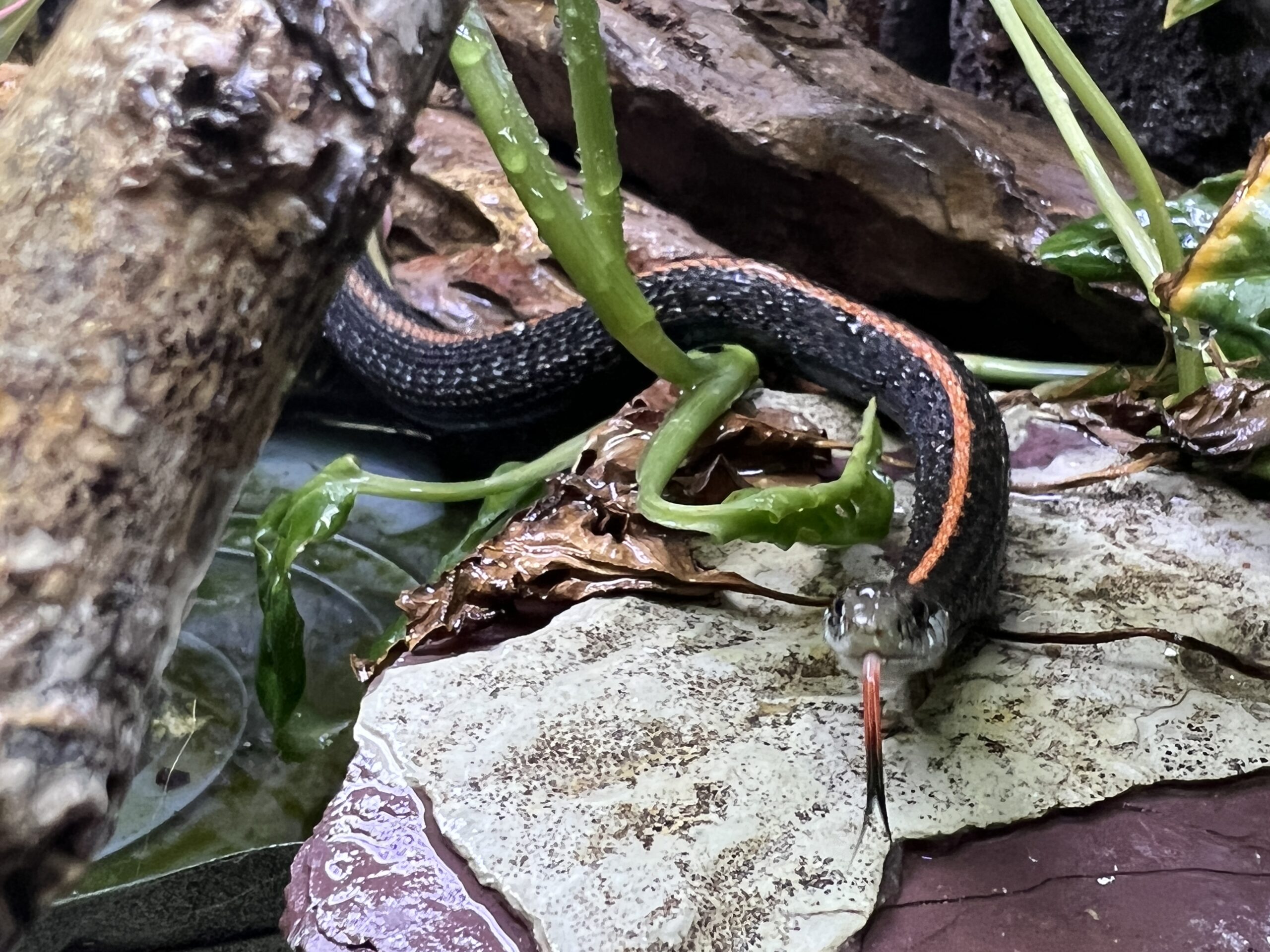CARE GUIDE
Genus: Thamnopis
Garter snakes are a small group of colubrid snakes found throughout North America and Central America. They are extremely successful and often have a varied diet based on what is available in each species’s specific region. They live in many types of environments including woodlands, forests, fields and grasslands. They enjoy being near water, and are often found near ponds, streams, or wetlands.
NATURAL RANGE
Garter snakes are common throughout the Southeast and most of North America up into Alaska. Some species can also be found further south into Central America.
HOUSING
Garter snakes will use every inch of their habitat, and we recommend at least a 40G size terrarium or 18x18x36 as a minimum for a pair. For a trio or more, we recommend an 18x36x36 glass terrarium with mesh top. They do not NEED UVB lighting, however we recommend it anyways, as they will certainly benefit from having access to UVB.
TEMPERATURE & HUMIDITY
A garter snake should be given a temperature gradient in its vivarium. We like to have a range from 75F-90* with a basking area of around 100*F. Temperatures at night can drop and they do not require night time heat unless your home stays in well into the low 60s for an extended period of time.
Garter snakes need moderate humidity from 30%-70%. A large water bowl will help achieve this as well as provide a soaking area for the snakes that they will certainly utilize.
SIZE & LIFESPAN
Females are around 3ft long depending on species and males are usually 2ft or less in length. They are a fairly slim bodied snake, males more so than females. Babies are very small, average size at birth is 6-8 inches.
The average life span in the wild may only be 4-5 years however they can live twice as long in captivity. Captives reaching over 10 years old have been documented when reptile health and wellness is prioritized.
FEEDING
Garter snakes are typically great eaters and enjoy a variety of options. We feed chopped tilapia, guppies, pinky mice, salmon, nightcrawlers, and more! We dust their feeders with calcium powder twice a week to insure they’re getting needed vitamins. They can be fed from tongs or from a food dish as long as they are not kept with aggressive eaters that may mistake them for a meal!
SOCIAL BEHAVIOR & HANDLING
Garter snakes are a surprisingly social snake and will often form close bonds with other garter snakes! They love to cohabitate, and will often be found bundled up together. Because of this we recommend cohabbing them with other garters (of their same species or other species) unless they are unusually aggressive. Baby garter snakes are more difficult to handle, and can be quite squirmy. As adults they often calm down and are great to handle. They are not typically biters, but will musk as a defense mechanism. If they DO bite, it is harmless and painless.
SEXING
Females are typically longer and thicker than males, but sexing by size is not always a perfect method and can lead to accidental breeding. While barely noticeable, the male’s tail base is thicker while the female’s tail tapers rapidly to the tip. Both genders reach sexual maturity between 1 and 2 years of age. They can also be probed or popped to determine sex but this should only be attempted by a professional.


